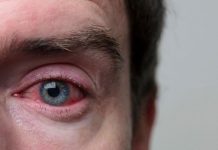Anyone, regardless of age, gender, or nationality, can have obsessive-compulsive disorder (OCD), an anxiety illness. OCD can result in intrusive, uncomfortable thoughts (obsessions), which can lead a person to engage in compulsive actions in an effort to manage and reduce the anxiety brought on by their painful thoughts. A person who suffers from harm OCD worries if they are in charge of their behavior and whether they might turn violent toward others or themselves. According to studies, the large population occasionally has violent thoughts that make us want to hurt ourselves or others. As an illustration, we might momentarily fantasize about harm coming to the person who only overtook us on the road and then frightened us further when he slammed on the brakes to avoid hitting other vehicles. Although we don’t like to admit it, roughly 85% of individuals do occasionally have damaging random thoughts, however, they are brief and don’t interfere with our daily activities.

However, having unpleasant ideas about hurting someone may be more difficult for those with obsessive-compulsive disorder (OCD) to reject. In reality, these thoughts may become so persistent and intrusive that they control the person’s life. If you feel that your persistent and obsessive thought has become overwhelming for you and you are unable to manage them, feel free to consult Dr. R.K.Suri, the best clinical psychologist in Dwarka, South-West Delhi.
The worry of harming oneself or one’s loved ones is a common sign of harm OCD. People with harm OCD have disturbing ideas or violent images in their heads that they wish to do to themselves or other people. When someone with harmful OCD experiences these obsession ideas, it can be extremely distressing and make them question if they truly wish to carry out these violent thoughts. As a result, those with Harm OCD frequently flee the scene or steer clear of the person or circumstance that sets off these thoughts. This avoidance develops into a coping strategy that the person thinks is required to protect both oneself and other people. Unfortunately, the OCD cycle of avoidance as a compulsion is strengthened and reinforced.
Examples of common obsessive thoughts of a person with harm OCD are:
- Worry that one day they might lose it and harm themselves or a loved one
- Fear of engaging in aggressive behavior
- Fear of succumbing to a violent impulse
- Fear of acting rashly and murdering or stabbing someone
- A desire to end one’s life before injuring someone
- Worry that one day they’ll pass out and hurt someone without even realizing it
- Have violent ideas or visuals in their heads, which makes them fear that they will carry those out.
- Focus on the possibility that someone can unknowingly do harm without realizing that
- Be afraid that they will accidentally or purposely harm someone (or themselves) out of the blue.
- Worry that they are being a cruel, angry person who will act out eventually because they might lose control and that they are keeping this from themselves and others.
Examples of common compulsive actions of people with harm OCD are:
- Checking oneself and others often to make sure you didn’t hurt anyone
- Avoiding those who or things that might make your obsessions worse
- Asking people to check to make sure you didn’t do any harm
- Examining your recollections in your head to make sure you didn’t injure anyone
- Avoiding using sharp things that have the potential to hurt someone, such as knives, pens, or pencils
- examining every move they made to determine if it would have resulted in harm or already did
- Avoid seeing the news or other violent media to prevent having violent thoughts. This includes violent movies, television shows, and videos.
- Inordinate periods of time online investigating violent incidents and ideologies to see whether they share any traits with the offenders.
- Carrying around and using spiritual objects compulsively in order to maintain control.
- Questioning whether other people feel that the sufferer of harm OCD might harm them.
- They might also keep asking themselves the same questions in an effort to determine for sure if they are capable of hurting someone (including themselves).
Treatment for harm OCD
It is recommended that people with harm OCD seek guidance from a mental health professional that specializes in treating OCD. Including Harm OCD, OCD professionals are qualified and able to treat a variety of OCD subtypes. As with all forms of OCD, Cognitive-Behavioral Therapy (CBT) can be used to treat Harm OCD. Specifically, ERP and Mindfulness-Based CBT are two CBT treatment modalities that can be used to treat this type of OCD.
Treatment for any OCD subset, such as Harm OCD, involves Exposure and Ritual Prevention (ERP), just like for classic OCD. ERP exposes patients to circumstances connected to anxiety-inducing intrusive thoughts. The objective of this therapy is for the patient to stop themselves from engaging in compulsive activities when they are prompted by intrusive thoughts. Over time, the scenarios that are faced will get more challenging until the patient is able to face and go through their worst-case scenario. They can get a lot of respite from the symptoms of OCD after they learn to cease engaging in obsessive actions in response to their intrusive thoughts.
With the aid of their therapist, the patient enables themselves to come into contact with the triggering object, idea, or setting that starts their loop of intrusive thoughts. This is known as the exposure phase of therapy. Consult Dr. R.K.Suri, the best clinical psychologist in Dwarka, South-West Delhi, and an expert in exposure therapy and can guide you to manage symptoms of OCD. The goal of such a therapeutic session with mental health expert will be to face fear head-on while avoiding using their compulsions for coping (ritual prevention). The person gains self-confidence and starts to rewire their brain by resisting the temptation to carry out a ritual following the exposure and discovering that they actually don’t act on the violent notion. As a result, they come to understand that their thoughts are just that—thoughts. The circle of doubt can be broken over time by regularly abstaining from compulsions and staying nonviolent.

















